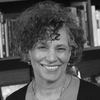For far too long, far too many lives have been cut short by the plague of gun violence in the places we live, work, play and love. We can't wait for Congress to act on gun control; it's time for the rest of us to take responsibility. For me, it means addressing gun violence as the public health emergency it is.
The mission of public health is to protect and promote the health, safety and wellbeing of entire populations. When public health professionals notice a troubling trend, we can't sit on the sidelines. We must take action. When we saw that thousands of people were dying before their time due to smoking each year, we aggressively disseminated information about the harms of smoking, implemented new treatment tools and collaborated with lawmakers to raise taxes and ban smoking in public places. Our multipronged approach worked - the adult smoking rate in New York City declined by 35% between 2002 and 2014, and the youth smoking rate fell by 53% from 2001 to 2013.
There's no reason our country can't take a similar multipronged approach to prevent gun violence. Community-based interventions like Cure Violence, a program started in Chicago by Dr. Gary Slutkin, are part of this effort. In New York City, Cure Violence aims to reduce gun violence in 17 neighborhoods that account for more than half of the city's shootings through a collaborative of community organizations and government partners delivering wraparound behavioral and social support services which have been shown to reduce violence.
We do this through the use of "credible messengers" and community mobilization techniques that aim to mediate conflicts between individuals and groups and prevent retaliatory violence before it occurs. Since its launch, the NYC Cure Violence program has grown to become the largest replication site in the world. Last year, Mayor de Blasio and the City Council expanded the successful NYC Cure Violence program to give even more New Yorkers the opportunity to live in a community not plagued by gun violence. Working alongside city agency partners and with our community partners, we're confident that New York City will remain the safest big city in the country.
However, community-level interventions are not enough. Public health improvements take time and require long-term investment, sustained action and strong collaboration to see results. We need stricter gun control in the United States to prevent these senseless killings. We must prevent civilians from purchasing guns that have no purpose other than to kill people quickly and in large numbers. Additionally, we need data to inform and understand the impacts of our efforts. An unnecessary, longstanding ban on federal research has prevented the Centers for Disease Control from funding studies on nationwide gun violence for more than two decades. I support the American Medical Association's fight to lift this unnecessary ban. Ignoring the problem of gun violence won't make it go away.
And even more fundamentally, we need to address the stigma and discrimination that often shape gun violence and put people of color, women, LGBTQI communities, and others at disproportionate risk. As we do research, design programs, and advocate for policy change, we must explicitly name racism, sexism, and homophobia. This is part of the mission of public health, the first step to actively confronting systems of oppression, and the first step to standing in solidarity.
